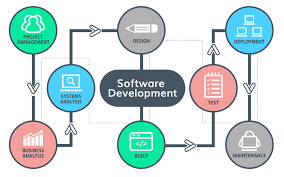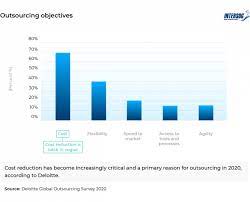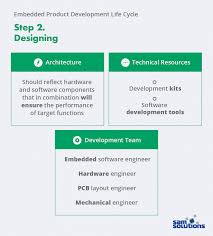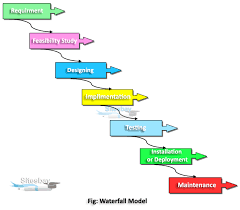Exploring the Dynamics of Software and Application Development
The World of Software and Application Development
Software and application development have become integral parts of our daily lives. From the apps on our smartphones to the programs we use on our computers, the process of creating software and applications is crucial in today’s digital age.
What is Software Development?
Software development is the process of designing, programming, testing, and maintaining software applications. It involves a combination of technical skills, creativity, and problem-solving abilities to create functional and user-friendly software solutions.
The Importance of Application Development
Application development focuses on creating specific software programs that serve particular purposes. Whether it’s a mobile app for tracking fitness goals or a web application for managing finances, applications enhance productivity and provide new opportunities for businesses and individuals.
The Software Development Lifecycle
The software development lifecycle (SDLC) consists of several phases, including:
- Planning: Defining project requirements and objectives.
- Design: Creating a blueprint for the software’s structure and features.
- Development: Writing code to build the software according to the design specifications.
- Testing: Identifying and fixing bugs or issues in the software.
- Deployment: Releasing the software for users to access.
- Maintenance: Providing updates and support to ensure the software remains functional over time.
The Future of Software Development
As technology continues to evolve rapidly, the field of software development is constantly adapting to meet new challenges and opportunities. Emerging trends such as artificial intelligence, cloud computing, and Internet of Things (IoT) are shaping the future of software development, offering innovative solutions for various industries.
In Conclusion
Software and application development play a vital role in shaping our digital world. With continuous innovation and collaboration among developers, we can expect to see even more advanced and user-friendly software solutions that enhance our lives in meaningful ways.
Top 8 Frequently Asked Questions About Software and Application Development
- What is programming and application development?
- What is software and application development?
- What is app and software development?
- Does app development require coding?
- What are the 4 types of application software?
- What does a software application developer do?
- Is application development the same as software engineering?
- What degree do you need to be an app developer?
What is programming and application development?
Programming and application development are fundamental aspects of creating software solutions that power our digital world. Programming involves writing code using specific languages to instruct computers to perform tasks and solve problems. Application development, on the other hand, focuses on designing, building, and maintaining software applications tailored to meet specific user needs. It encompasses the entire process from conceptualization to deployment, ensuring that the final product is functional, user-friendly, and meets the desired objectives. In essence, programming and application development are the building blocks that enable us to bring innovative ideas to life through technology.
What is software and application development?
Software and application development encompass the process of creating, designing, testing, and maintaining software programs tailored to meet specific needs and functionalities. In essence, software development involves the conceptualization and implementation of digital solutions, while application development focuses on crafting specialized programs to address particular tasks or requirements. These disciplines require a blend of technical expertise, creative problem-solving skills, and a keen understanding of user experience to deliver efficient and user-friendly software products that cater to diverse industries and individual users alike.
What is app and software development?
App and software development refer to the process of creating computer programs and applications that serve specific functions or purposes. This involves designing, coding, testing, and maintaining software solutions to meet the needs of users in various industries. App development typically focuses on creating applications for mobile devices, while software development encompasses a broader range of programs for desktops, servers, and other platforms. Both disciplines require a combination of technical expertise, creativity, and problem-solving skills to deliver efficient and user-friendly solutions that enhance productivity and streamline operations.
Does app development require coding?
In the realm of software and application development, a commonly asked question is whether app development necessitates coding. The answer is yes, app development typically involves coding to create the functionalities and features of an application. Coding serves as the foundation for designing and building apps across various platforms, allowing developers to customize and optimize the user experience. While there are tools and platforms that offer no-code or low-code options for app development, a fundamental understanding of coding languages remains essential for creating robust and tailored applications that meet specific requirements.
What are the 4 types of application software?
In the realm of software and application development, one frequently asked question revolves around the classification of application software into four main types. These types include productivity software, entertainment software, business software, and utilities software. Productivity software encompasses tools like word processors and spreadsheets that aid in everyday tasks. Entertainment software includes games, multimedia players, and virtual reality applications designed for leisure and enjoyment. Business software is tailored for organizational purposes, such as accounting programs and customer relationship management (CRM) systems. Utilities software consists of tools like antivirus programs and disk cleaners that optimize system performance. Understanding these distinct categories helps developers tailor their solutions to meet specific user needs effectively.
What does a software application developer do?
A software application developer is responsible for designing, coding, testing, and maintaining software applications to meet specific user needs and requirements. They work closely with clients or stakeholders to understand the desired functionality of the application and translate those requirements into technical solutions. Software application developers use programming languages and development tools to create efficient and user-friendly applications that enhance productivity and provide solutions to various challenges. Additionally, they stay updated on industry trends and best practices to deliver high-quality software products that meet the evolving demands of users in today’s digital landscape.
Is application development the same as software engineering?
When it comes to software and application development, a common question that arises is whether application development is the same as software engineering. While both disciplines involve creating software solutions, they have distinct differences. Application development typically focuses on designing and building specific applications to meet particular needs or tasks. On the other hand, software engineering encompasses a broader approach that involves the systematic application of engineering principles to develop robust, scalable, and maintainable software systems. Software engineers not only design and build applications but also consider the entire software development lifecycle, including requirements analysis, system design, testing, and maintenance. Both application development and software engineering are essential aspects of creating functional and efficient software solutions in today’s technology-driven world.
What degree do you need to be an app developer?
To pursue a career as an app developer, a degree in computer science, software engineering, or a related field is typically recommended. While having a formal degree can provide a strong foundation in programming languages, software development principles, and problem-solving skills, it is not the only path to becoming an app developer. Many successful developers also acquire relevant skills through self-study, online courses, coding bootcamps, and practical experience. Ultimately, what matters most in app development is a passion for coding, continuous learning, and the ability to create innovative and user-friendly applications that meet market demands.












